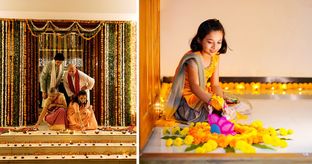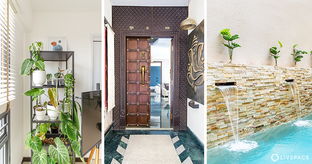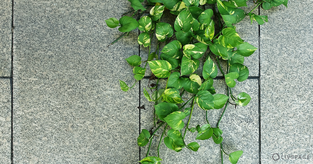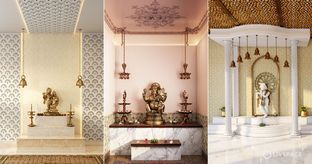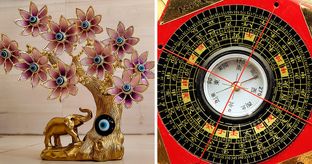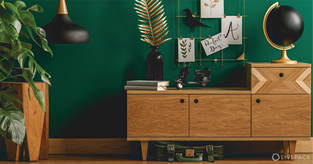In This Article
- #1: Place your Ganpati Murti facing the right direction
- #2: Notice the direction of the trunk of your Ganpati murti
- #3: The posture of your Ganesh murti design is symbolic
- #4: The colour of the Ganpati Murti has a lot of significance
- #5: At what height should the Ganpati Murti be placed?
- #6: What are the best materials for Ganpati murti?
- #7: Other posture-related things to consider
- #8: What is the ideal size for Ganpati Murti?
- #9: How many Ganpati idols should you have?
- #10: Where should you not place your Ganpati murti?
- #11: Additional elements to consider
- How can Livspace help you?
The elephant-headed god, remover of obstacles and patron of new beginnings, finds his way into homes, offices, and hearts with an ease that speaks to something deeper than mere religious observance. Yet, as with all things sacred in Indian tradition, the placement of a Ganpati murti is not just a matter of devotion; it is an intricate dance between cosmic energies, architectural sensibilities, and the profound science of Vastu Shastra.
Ganesh Chaturthi 2025 Date: Wednesday, 27 August

#1: Place your Ganpati Murti facing the right direction
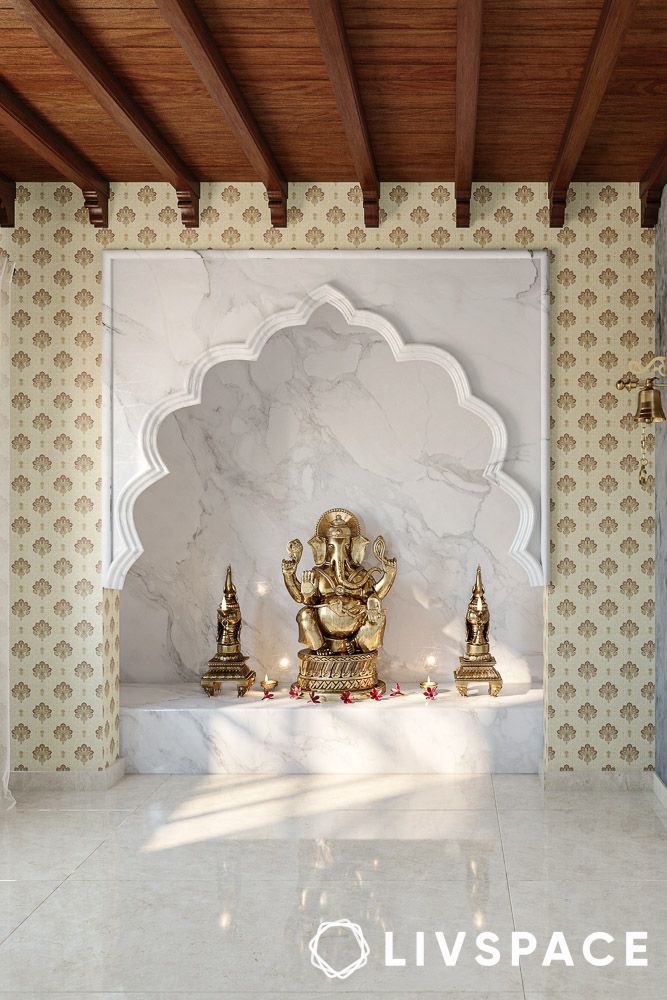
The cardinal directions hold secrets that Vastu practitioners have decoded over millennia, and the orientation of your Ganpati murti serves as a crucial key to unlocking prosperity and peace. The northeast corner, known as the Ishaan corner in Vastu terminology, is the most auspicious placement for Lord Ganesha. This direction, where the sun’s first rays touch the earth, carries the concentrated energy of new beginnings.
For those considering a Ganesh murti for home entrance, the deity should ideally face inward, welcoming positive energies while simultaneously guarding against negative influences. This inward-facing placement creates a protective barrier, transforming your threshold into a sacred checkpoint where only beneficial forces may pass.
Interestingly, the Dagdusheth Ganpati Murti for home replicas often comes with specific orientation guidelines that mirror the famous Pune temple’s own directional alignment, emphasising the importance of maintaining traditional positioning even in miniature form.
Also Read: 30 Easy and Beautiful Ganpati Decoration Ideas to Welcome Bappa Home (ft. Bollywood Celebs)
#2: Notice the direction of the trunk of your Ganpati murti
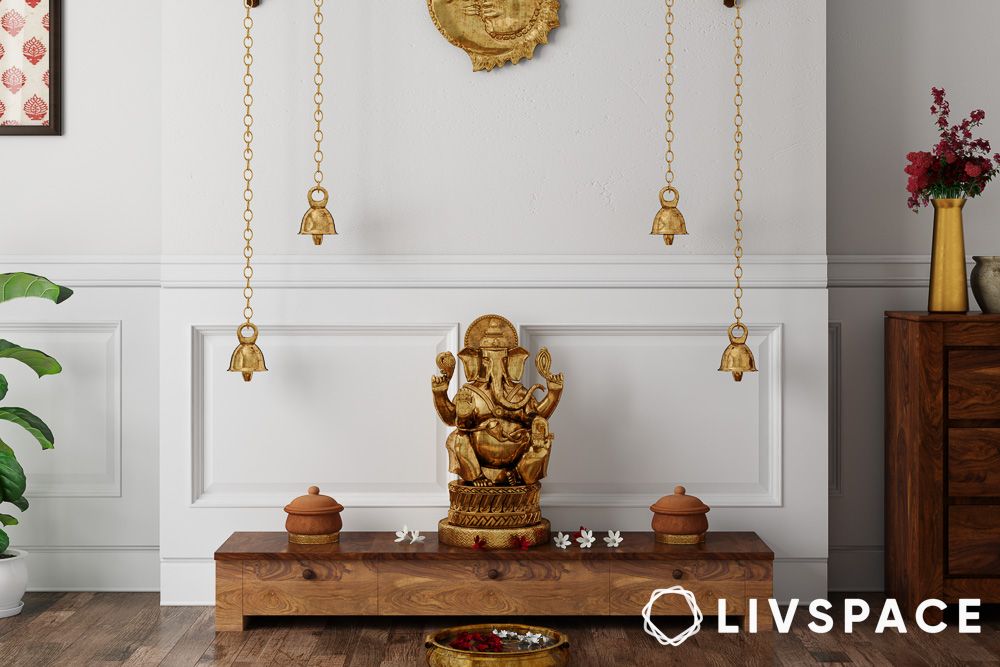
The trunk of Lord Ganesha carries profound symbolic weight, and its direction determines the type of energy that flows through your space. A left-curving trunk, known as “Vamamukhi,” represents the lunar channel and is considered ideal for household worship. Right-curving trunks, or “Dakshinamukhi,” channel solar energy and are traditionally associated with more rigorous worship practices. While powerful, these murtis require dedicated attention and are often better suited for temples or spaces dedicated entirely to worship.
A straight trunk, though less common, represents balance and is particularly suitable for Ganesh idols for office environments where equilibrium between spiritual and material pursuits is desired.
#3: The posture of your Ganesh murti design is symbolic
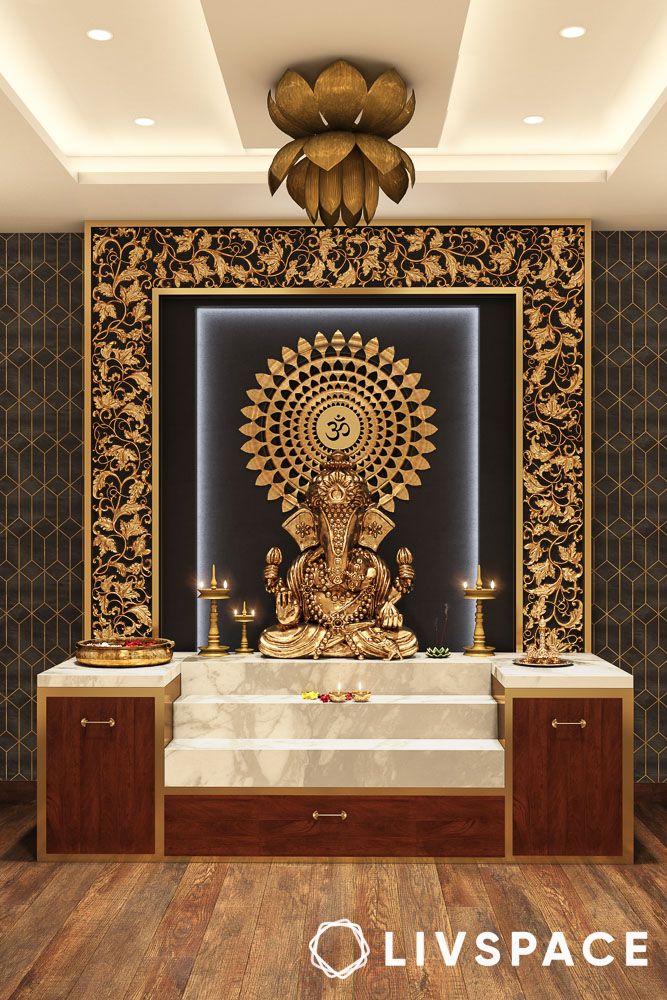
The seated Ganesha, legs folded in meditative repose, embodies stability and contemplation. This posture is ideal for spaces dedicated to study, meditation, or any activity requiring sustained concentration. The Ganesh idol for pooja rooms or home temple designs traditionally features this seated position, creating an atmosphere conducive to prayer and introspection.
Standing murtis radiate dynamic energy and are excellent for entrance areas where movement and activity are constant. The dancing Ganesha, though less common in home settings, represents the cosmic dance of creation and destruction, suitable for spaces where creativity and transformation are welcomed.
Reclining positions, while beautiful, are generally reserved for specific festivals and are not recommended for permanent household placement according to Vastu principles.
Did you know?
We worship 32 forms of Ganesha, and they are:
- Bala Ganesha
- Taruna Ganesha
- Bhakti Ganesha
- Shakti Ganesha
- Veera Ganesha
- Siddhi Ganesha
- Dwija Ganesha
- Vigna Ganesha
- Ucchista Ganesha
- Kshirpa Ganesha
- Heeramba Ganesha
- Lakshmi Ganesha
- Maha Ganesha
- Vijaya Ganesha
- Nritya Ganesha
- Urdhva Gnesha
- Ekakshara Ganesha
- Vara Ganesha
- Thyakashara Ganesha
- Kshipraprasaada Ganesha
- Haridra Ganesha
- Ekadanta Ganesha
- Srishti Ganesha
- Uddhanda Ganesha
- Runamochana Ganesha
- Dhundi Ganesha
- Dwimukha Ganesha
- Trimukha Ganesha
- Smiha Ganesha
- Yogi Ganesha
- Durga Ganesha
- Sankathara Ganesha
#4: The colour of the Ganpati Murti has a lot of significance
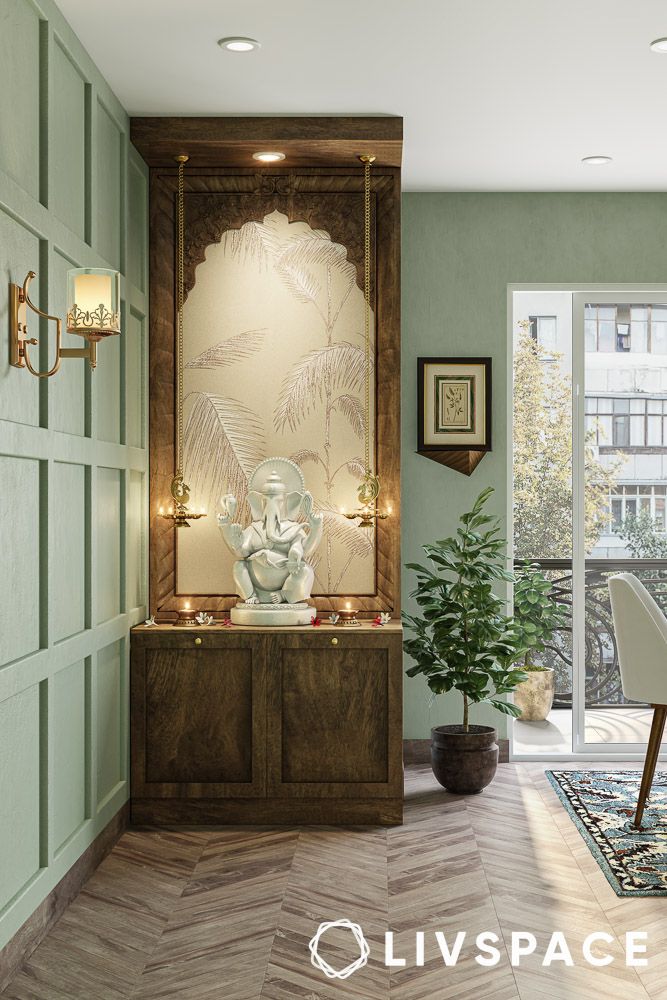
Colour psychology in Hindu tradition extends far beyond aesthetic preference. Traditional red and orange hues resonate with Mars and the Sun, promoting courage and leadership qualities. These colours are particularly effective for the Ganesh murti for home entrance placements, where protective and welcoming energies are paramount.
White and cream tones align with lunar energies, fostering peace and mental clarity—ideal characteristics for bedroom or study area placements. Gold, associated with Jupiter, enhances wisdom and prosperity.
Also Read: Your Ultimate Guide to Room Colours As per Vastu
#5: At what height should the Ganpati Murti be placed?

The ideal height for a Ganpati murti ranges from 3 to 5 feet from the ground, positioning the deity at a level that allows for comfortable worship without necessitating looking downward, which is considered inauspicious.
For Ganesh idol for pooja room installations, the height should allow devotees to maintain eye contact with the deity while standing or sitting in prayer.
In home office designs, the height should be such that the deity is visible and accessible for daily prayers without disrupting the workspace’s functionality. A Ganesh idol for office placed too high becomes distant and impersonal, while one placed too low may be inadvertently disrespected.
#6: What are the best materials for Ganpati murti?

The material composition of your Ganpati murti significantly influences the energy it radiates and attracts. Clay, the most traditional material, maintains a direct connection with the earth element, promoting grounding and stability.
Marble and stone murtis offer permanence and durability, their cool surfaces providing a calming influence ideal for meditation spaces. Metal idols, particularly those crafted from brass or bronze, conduct energy efficiently and are often preferred for their longevity and top the list of eco-friendly Ganesha ideas.
For Dagdusheth Ganpati Murti for home replicas, materials that mirror the original temple’s aesthetic—often silver or white metal—help maintain the spiritual connection to the revered original.
Wood, while beautiful, requires careful consideration of the tree species used, as different woods carry distinct energetic properties according to Vastu principles.
Also Read: 15 Vastu Shastra Tips to Help You Stay on the Right Side of Luck
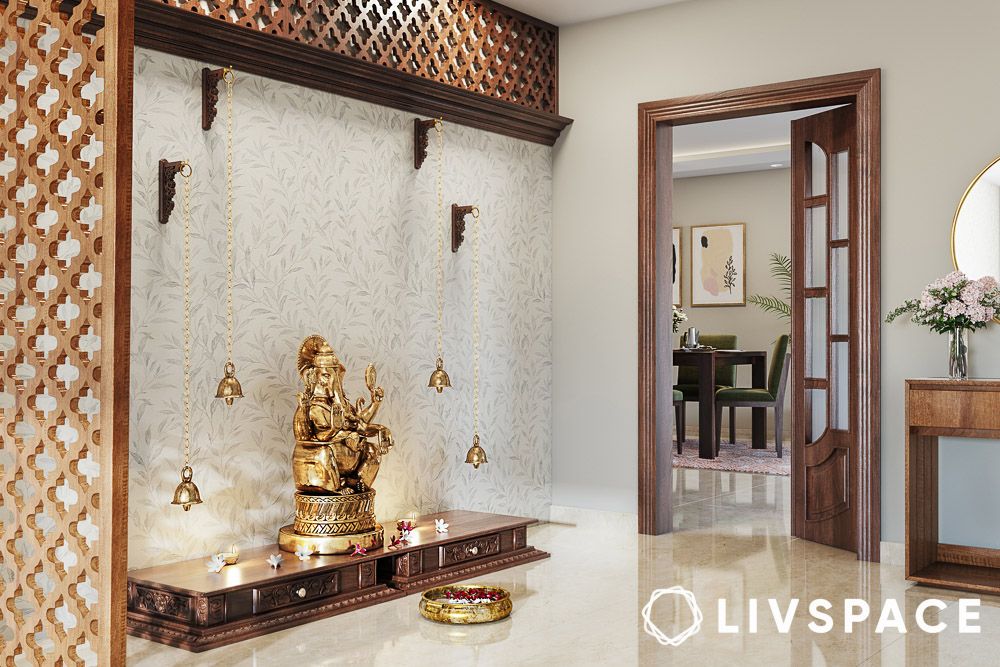
Beyond the basic seated or standing positions lies a rich vocabulary of hand gestures and postures, each carrying specific meanings and benefits. The Abhaya mudra, with the right hand raised in blessing, offers protection and fearlessness to devotees. This posture is particularly beneficial for Drishti Ganesha for entrance placements, where protective energy is paramount.
The Varada mudra, with the left hand extended in giving, promotes generosity and wish fulfilment. Murtis displaying both mudras simultaneously create a balanced energy field suitable for most household applications.
The position of the legs also matters—one leg folded and one pendant (Ardhaparyankasana) suggests readiness for action while maintaining meditative calm, ideal for spaces where both contemplation and activity occur.
#8: What is the ideal size for Ganpati Murti?
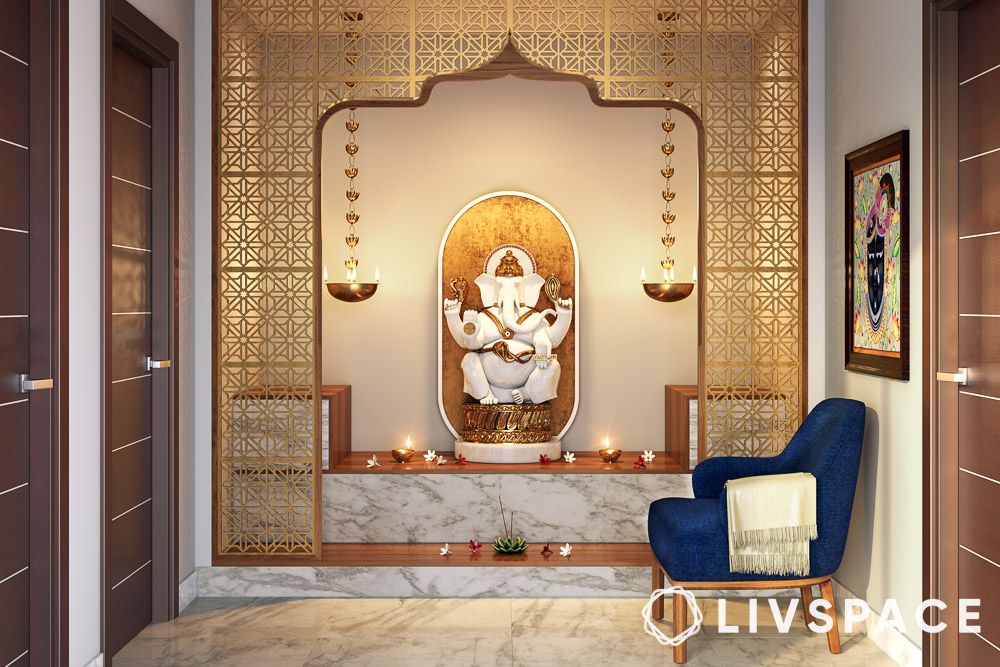
For most homes, a Ganpati murti between 6 to 12 inches in height provides adequate presence without overwhelming the space.
Larger homes can accommodate bigger idols, but the relationship between the deity’s size and the room’s dimensions should maintain harmony. A massive idol in a small space can create energetic congestion, while a tiny murti in a vast area may lack sufficient presence to effectively influence the environment.
For Ganesh idol for pooja room selection, consider the proportions relative to other deities if multiple idols are present.
#9: How many Ganpati idols should you have?

Traditional wisdom suggests that one primary Ganpati murti per household maintains clarity of intention and concentrated devotional energy. Multiple idols can dilute focus and create confusion in worship practices.
However, small decorative Ganesha figures throughout the home are permissible and even beneficial, provided one main murti serves as the focal point for regular worship. These secondary pieces can include Drishti Ganesha for entrance protection and a small Ganesh idol for office placements.
Also Read: Unlock Prosperity With These Vastu Tips for Home Entrances
#10: Where should you not place your Ganpati murti?
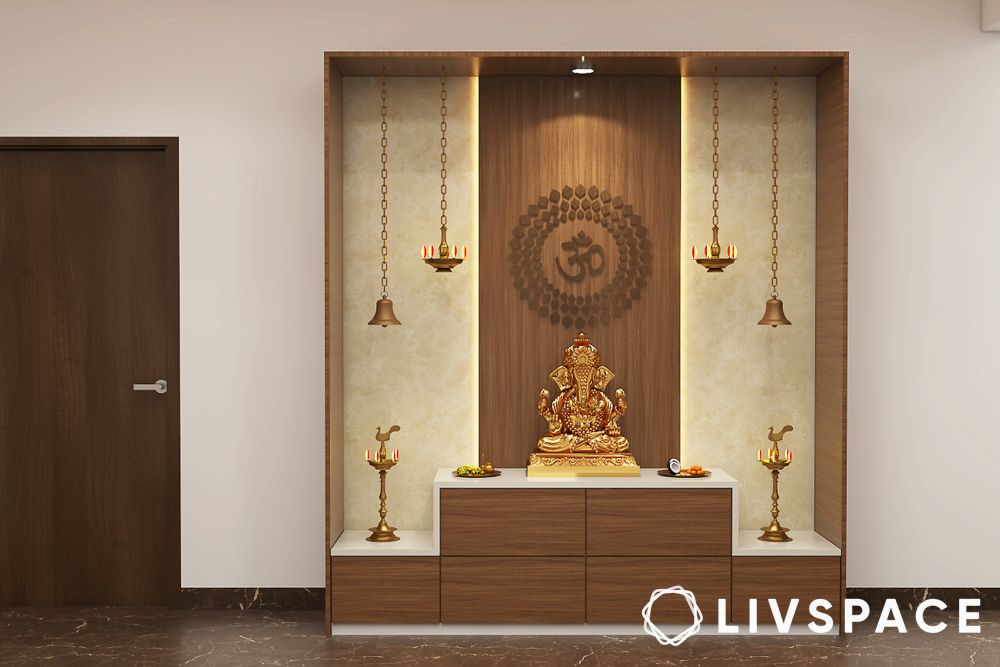
Certain locations within the home create energetic discord or practical difficulties for worship. Bathrooms, being associated with waste elimination, create an inauspicious environment for sacred imagery. Similarly, bedrooms, particularly the marital bedroom, are considered too personal and intimate for divine presence.
South-facing walls should be avoided, as this direction is associated with Yama, the god of death, creating energetic conflict with Ganesha’s life-affirming presence. Under staircases, in dark corners, or near garbage areas also prove unsuitable for obvious reasons.
The kitchen, while seemingly domestic and appropriate, can be problematic due to the cooking of non-vegetarian food, which some traditions consider incompatible with divine presence.
Also Read: 10+ Easy Tips and Tricks to Remove Vastu Doshas From Your Home
#11: Additional elements to consider
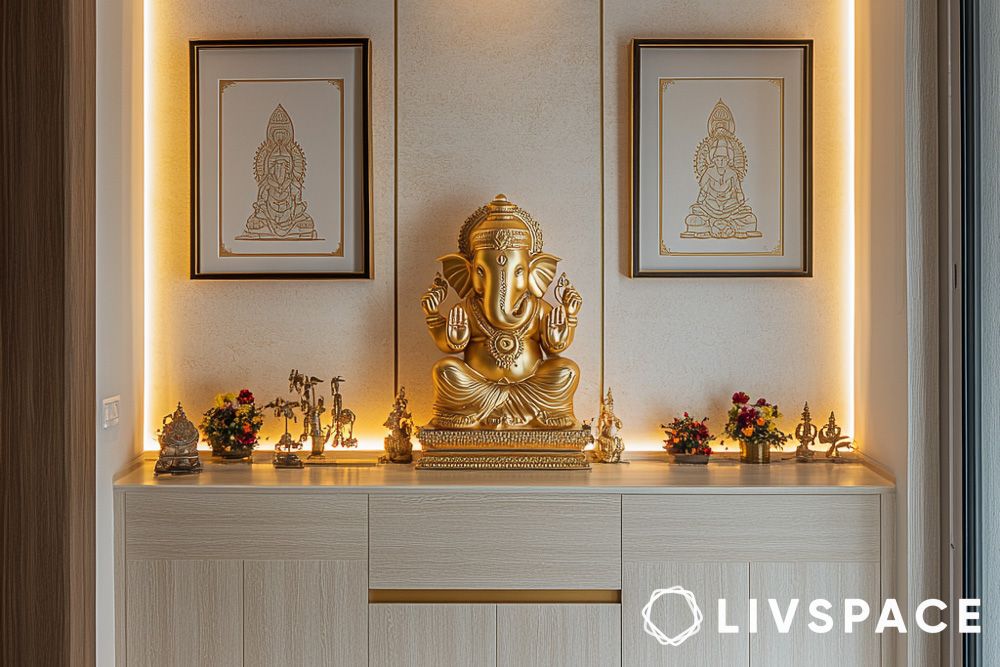
- Tiny mouse: Don’t forget Ganesha’s vehicle—the mouse represents the ego that the deity helps us overcome
- Modak: These sweet treats are Ganesha’s favourites. Fresh modaks for festivals and special occasions activate the sense of taste in worship
- Flowers: Red hibiscus, marigolds, and lotus flowers each carry specific energetic properties that complement Ganesha worship
- Incense: Sandalwood and jasmine incense create pathways to devotion whilst purifying the air
- Lamps: Oil lamps or electric lights should illuminate your Ganpati murti during worship, symbolising the removal of ignorance and the presence of divine knowledge
How can Livspace help you?
If you want Vastu-friendly interiors for your home, then look no further. Connect with a trusted interior designer near you through Livspace today.
- Our expert team can custom-design your dream home with curated render designs and expert advice
- We have delivered over 75,000+ happy homes
- We promise high-quality and durable materials





